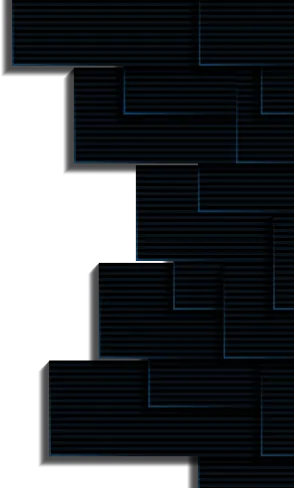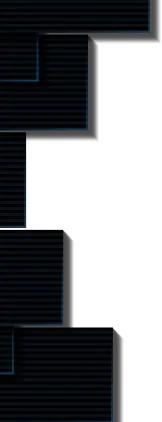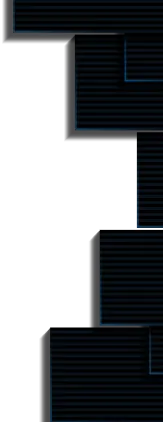MultiversX — The Internet Scale Blockchain
Author: Kaushal

The new generation of blockchains isn't just built for settling transactions. They allow a plethora of functionalities atop themselves. For example, Ethereum is the flagship smart contract-based blockchain that enables the development of decentralized applications across NFTs, DeFi, and other use cases. But there are some downsides to using it: due to low throughput on the network, transaction fees sometimes get astronomically high.
Over the last few years, developers and blockchain enthusiasts have come up to solve the scalability issues and have proposed several alternate layer-1 blockchains to Ethereum. MultiversX is one of them.
The MultiversX blockchain is a highly scalable and touts itself to be powerful enough to work at 'the internet scale'. While Ethereum settles only 15 transactions per second, MultiversX is a thousand times faster, handling a minimum of 15,000 transactions per second. And not just for scalability, it's also built for security and decentralization—solving the infamous blockchain trilemma.
Blockchain Trilemma: A problem that a blockchain runs into when it tries to enhance decentralization, scalability, and security. When one is amped up, the others suffer.
Besides supporting NFTs and DeFi, MultiversX also has enterprise use cases (due to its user-friendly experience and low transaction fees).
MultiversX: Under the Hood
As stated above, the MultiversX network can settle (at least) 15,000 transactions per second with a minimal fee of around $0.001. The latency in translation confirmation is about six seconds.
But how can the MultiversX network increase its throughput by orders of magnitude compared to Ethereum?
It combined two novel ideas: Adaptive State Sharding and a Secure Proof of Stake (SPoS) consensus mechanism.
Adaptive State Sharding
When it comes to sharding, there are three types:
- State sharding: Distributes the state of the network to different shards. Each shard has its own history and nodes.
- Transaction sharding: Maps a transaction to a shard based on criteria like the sender's address. Each node keeps a record of the state of the entire blockchain network.
- Network sharding: Brings nodes together to make a shard to optimize criteria communication.
Adaptive State sharding combines all three types of sharding. It improves communication inside shards while allowing for parallel processing and making a shard hold only its portion of the state, not the entire network state.
In other words, each shard only processes a fraction of the transactions parallel to other shards.
Secure Proof-of-Stake (SPoS)
Secure Proof-of-Stake is like Proof-of-Stake, where to validate transactions in a block, users need to lock up a certain amount of cryptocurrencies, so they have skin in the game in securing the network. The Secure PoS maintains a higher level of security by randomly shuffling the nodes into other shards to avoid potential plotting. An unbiased and entirely random algorithm does this inter-shards shuffling.
MultiversX VM
MultiversX Virtual Machine is built on top of WebAssembly (WASM) and can run smart contracts. Developers can write contracts in any programming language, compile them on WASM and debug its WAT human-readable format.
Metachain
A metachian is responsible for the consensus mechanism (keeping a list of validators, rewarding the validators, slashing them for being dishonest or shady), facilitating communication between shards, and finalizing the processed shard block headers. It doesn't process transactions.
Nodes
A node is a device participating in making the chain secure and creating new blocks. So it can be anything from a computer to a phone as long as it runs the MultiversX client and relays messages to other nodes in its shard.
A node can be a validator, observer, or fisherman and earn a set amount of rewards for each role.
Validator
Validators are nodes that lock up their coins as stakes to participate in consensus to create new blocks. Rewarded from the protocol and the transaction fees for their services, the validators can get slashed too.
If they try to validate false and fraudulent transactions, they are kicked out of the network, and their collateral is confiscated. The staked collateral allows for good behaviors from validators. They are also rated based on their performance: when a validator takes part in consensus, their rating increases.
The opposite is also true; each time the validators are offline during consensus and cannot participate while a block is being produced, the rating drops.

Observers are nodes that do not lock up a stake and are passive members of the network that act as a read-and-relay interface. They are either Full or Light, meaning they either keep the entire history of the blockchain or keep only the two epochs of the blockchain data. There is no reward for observers.
Fishermen are rewarded too. A fisherman is a node not part of an ongoing consensus round and not an observer. It must verify the legitimacy of the blocks after they have been approved and are responsible for challenging invalid transactions written on the block by malicious actors.
The EGLD token
EGLD, abbreviated for Electronic Gold, is MultiversX's native currency and is used throughout the MultiversX ecosystem— from staking, voting, and transacting to paying validators and fishermen for their services.
Besides serving as a digital ledger for transactions, the MultiversX blockchain offers the ability to deploy smart contracts and host decentralized applications and tokens atop. So MultiversX's native token is also used to interact with the Dapp and the smart contracts.
EGLD has seen real-world adoption by institutions. For example, the Lucian Blaga University of Sibiu implemented fee payments through EGLD for 11,000 students. The blockchain company announced a partnership with Shopping.io, whereby shoppers could earn rewards from the largest retailers in the US if they shop using the EGLD token. Polkamon NFT collections also announced integrating with the MultiversX platform for speed and convenience.
EGLD tokenomics and sustainability
MultiversX has a hard cap on the total supply of its EGLD token, which is 31 million. Precisely, the maximum supply can never exceed 31,415,926 EGLD. This makes the coin inherently deflationary, as there won't be any coins minted after the limit is reached, and the number of coins is expected to go down as people tend to lose/forget their wallets, etc. There are currently north of 20 million coins in circulation.
MultiversX background
MultiversX was cofounded in 2017 by two brothers, Beniamin Mincu and Lucian Mincu, alongside Lucian Todea.
The project raised $1.9 million in a private funding round from angel investors in June 2019. The very same month, MultiversX's held an IEO (Initial Exchange Offering) to exchange 25% of its coin supply with $3.25 million.
Initially, the ticker for MultiversX's native coin was ERD, which was changed to EGLD in July 2020. The company held a transitory event allowing ERD holders to swap their coins for EGLD.
Rebranding to MultiversX
MultiversX was previously known as Elrond. In November 2022, they announced their transformation into MultiversX during X-day event in Paris.
Today, a new chapter begins.
— Beniamin Mincu | MultiversX.com 🔥🛠️ (@beniaminmincu) November 3, 2022
A bridge between worlds, at the intersection of worlds, and across worlds.
This is our new challenge. Our new vision.
@ElrondNetwork transforms and expands into MultiversX. pic.twitter.com/lpk8qvTu1I
MultiversX announced three new products along with its rebranding: xFabric, xPortal, and xWorld.
- xFabric is a fully customizable self-contained blockchain module.
- xPortal aims to replace the Mariar app. It will allow users to access fiat currency transfers and plastic cards.
- xWorld, referred to as the first Metaverse planet of this new world, is a network of interoperable metaverses.
The migration process would include new economics, utility, and mechanics for the DEX's native token, MEX.
After a successful Governance vote, Maiar DEX and MEX are evolving.
— xExchange (@xExchangeApp) December 8, 2022
The Scheduled Maintenance for the migration process begins today, December 8th 15:00 UTC and will end on December 10th.
Relentless efforts by the team, community and partners🛠
Stay tuned for the next updates! pic.twitter.com/deT3krV2zN
How does MultiversX stack up to other alt L-1s
Algorand is not the only chain trying to solve the blockchain trilemma. Other blockchains are doing it, too, including Ethereum 2.0, Solana, Polkadot, Avalanche, etc. Let's see how MultiversX stacks up in front of other chains.
Algorand vs. MultiversX
The most prominent difference between these two closely similar blockchains is that the Algornad doesn't have any sharding mechanism at all, whereas MultiversX relies entirely on sharding for scalability. Also, they differ in the mechanism they use to reach consensus; one uses Pure Proof-of-Stake, whereas the other relies on Secure Poof-of-Stake.
MultiversX vs. Ethereum 2.0
Ethereum 2.0, which has not been fully deployed (yet), intends to solve Ethereum's scalability problem. The current Ethereum mainnet throughput is only around 15 tps which will likely shoot up to an astronomical 100,000 tps (according to Vitalik Buterin). Not only that, Ethereum is moving from hashing power-based Proof-of-Work consensus mechanism to a collateral-based Proof-of-Stake mechanism. It's also implementing shards for memory allocation.
The key differences between the two:
- Throughput: The currently slow 15tps Ethereum will scale to 100k tps Ethereum. MultiversX mainnet garnered 15,000 tps at its launch but has settled 263,000 transactions with a total of 50 shards, which is over ten times more than what VISA claims to handle.
- Consensus Mechanism: Ethereum 2.0 will use Proof-of-Stake, whereas MultiversX is Secure Proof-of-Stake.
- Sharding Mechanism: Ethereum 2.0 will run on a fixed amount of 1024 shards, which raises security concerns. Keep in mind that there's a minimum number of nodes or shards to ensure safety against malicious actors. If nodes leave the Ethereum system, some shards go beneath the minimum number of nodes required to maintain the 1024 shard count.

On the other hand, MultiversX Adaptive State Sharding allows shards to split or merge. As a result, the shard counts decrease as nodes leave the network and rise as more nodes join the network, while security on each shard remains intact.
MultiversX is eco-friendly
Bitcoin's Proof-of-Work-based mining is tremendously energy-intensive and is often criticized as "environmentally wasteful" by no-coiners. In contrast, MultiversX can offer astronomically high scalability while using a relatively eco-friendly and less energy-demanding Secure Proof-of-Stake consensus mechanism and Adaptive State Sharding.
Talking of numbers, even operating at full throttle, MultiversX requires 88 milli-Wh of electricity, whereas the veteran Bitcoin consumes 550kWh per transaction. MultiversX is an eye-popping 624 million times more energy-efficient than Bitcoin.
Wrapping Up!
Previously known as Elrond, MultiversX is a highly scalable, secure, and decentralized blockchain network created to enable radical new applications for users, businesses, and society. It uses Secure Proof of Stake, which makes it more eco-friendly than other blockchains.





Subscribe to receive Alpha!
Join 4.3k subscribers from renowned companies worldwide and get a weekly update in your inbox. Stay updated on the latest and finest projects and product updates.

